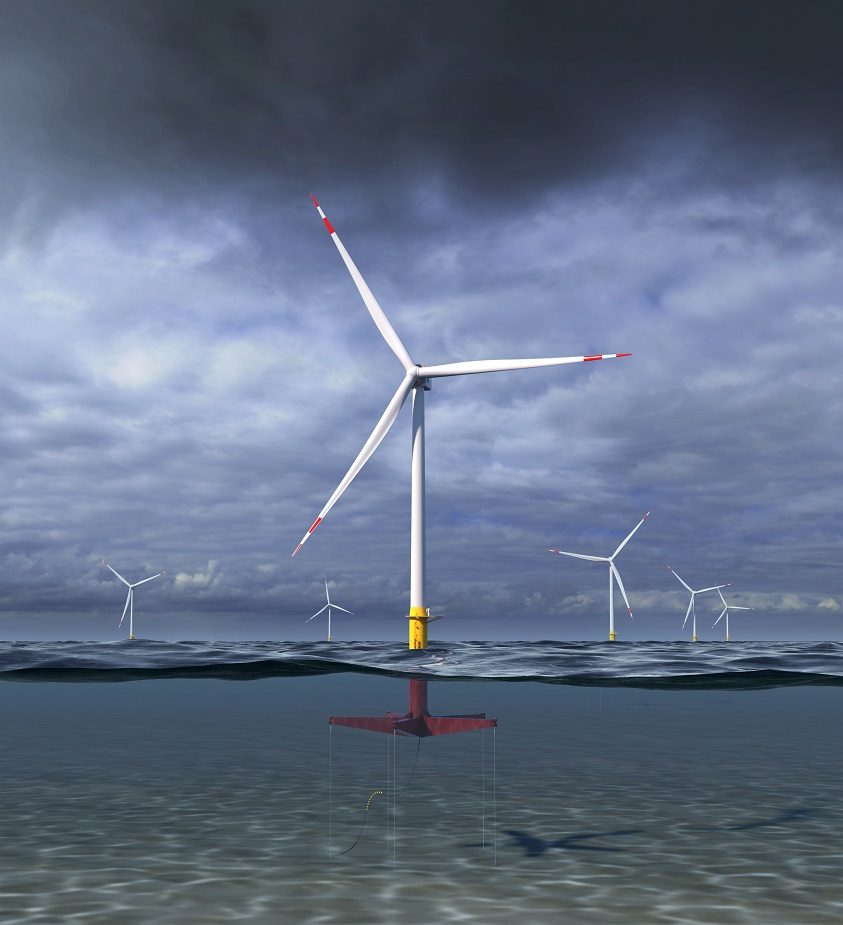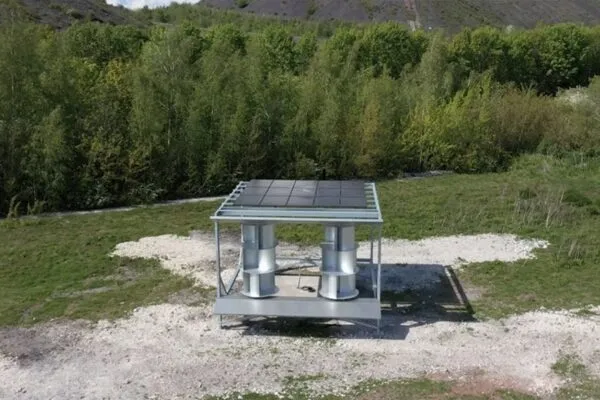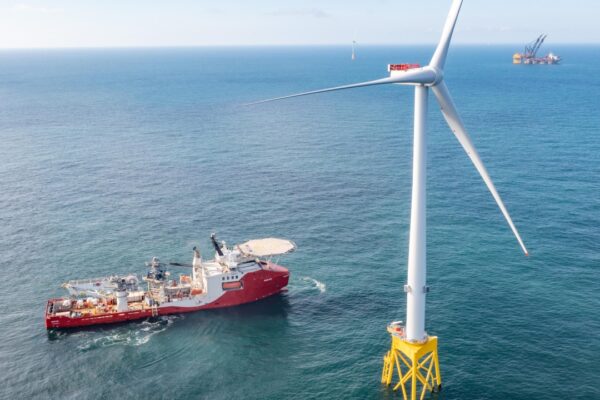GE Announces 12 MW Floating Wind Turbine Concept
The Floating Wind Turbine project is one of the most anticipated energy technologies, that GE research featured at the annual ARPA-E Innovation Summit – virtually held from Monday, May 24-27.
GE researchers announced the details of their current two-year, $4 MM project through the ARPA-E’s ATLANTIS (Aerodynamic Turbines Lighter and Afloat with Nautical Technologies and Integrated Servo-control) program, researching on design and advance control development to support 12 MW Floating Offshore Wind Turbine. GE collaborated with Glosten for this project – one of the leading design consulting firms in the marine industry.

Image: GE
The design of the turbine is found to be a crucial aspect of this project. Designing a floating turbine is like placing a bus on a tall pole, making it float and stabilize it for a long time, amid wind and waves. This is a challenge in both engineering and design aesthetics to achieve the intended goal.
To promote floating offshore wind energy as a key objective of ARPA-E’s Atlantis program, the team faced challenges to create a floating turbine with 35% less mass in the tower and the floating surface. This will lead to a reduced Levelized Cost of Energy – LCOE. The core principle is to design a control system with a tower and floating mechanism.
Between GE Research and Glosten, the joint examination group gets many years of skill in all spaces of innovation associated with achieving the mission of the venture. This includes precise turbine controls, building the structures, aerodynamic designing, maritime engineering, and hydrodynamics.
Also Read: The Orbital Launches World’s Most Powerful Operational Tidal Turbine
Blom noticed that empowering drifting seaward wind would drastically grow the force age capability of seaward wind power.
As indicated by the National Renewable Energy Lab (NREL), the presentation of gliding turbines would significantly extend the capability of US seaward wind assets to more than 7,000 TeraWatt hours (TWh) each year, almost twofold the complete yearly US energy utilization of 4,000 TWh.


